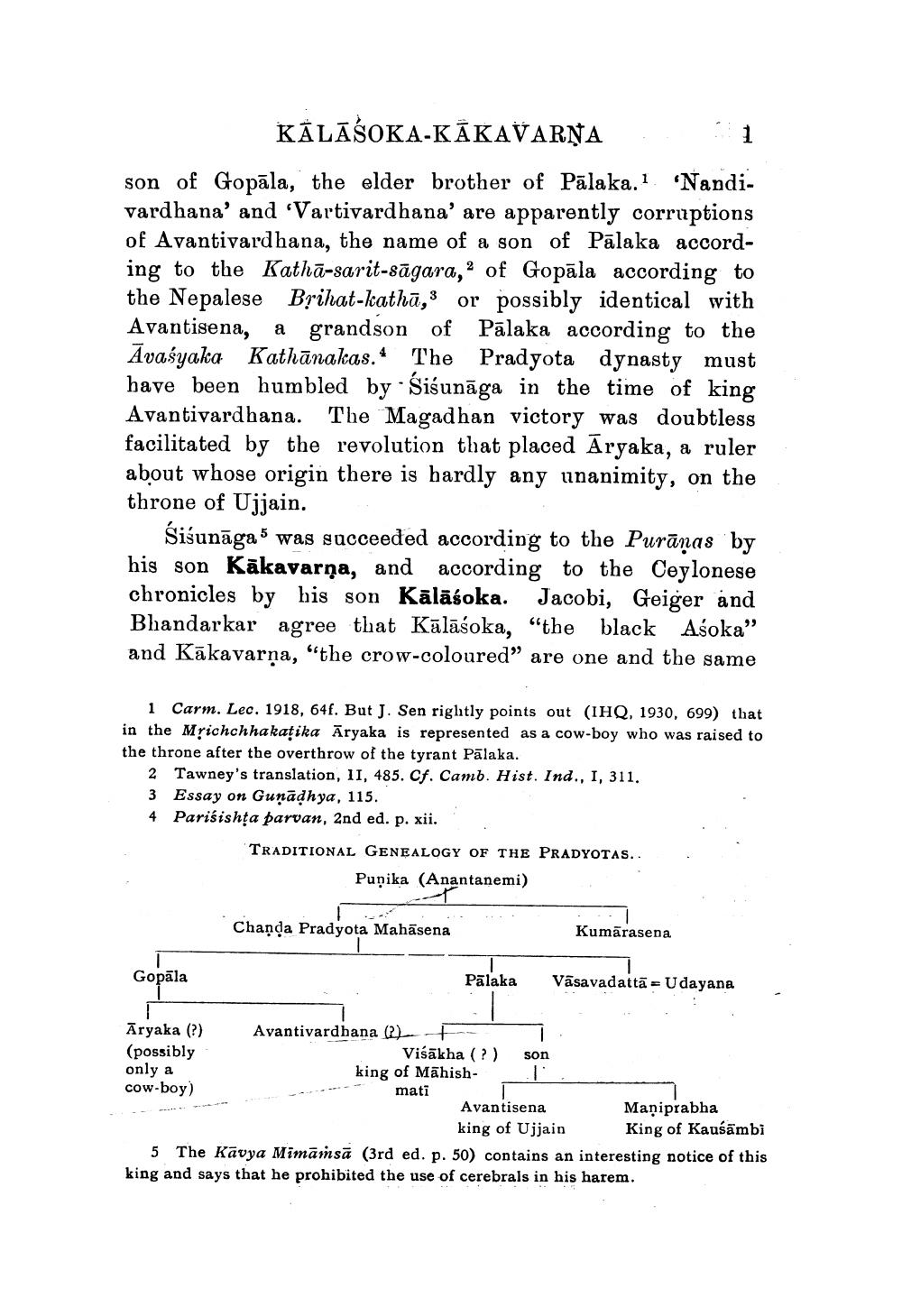________________
KĀLĀSOKA-KĀKAVARŅA . 1 son of Gopāla, the elder brother of Pālaka. 1. 'Nandi. vardhana' and 'Vartivardhana' are apparently corruptions of Avantivardhana, the name of a son of Pālaka according to the Kathā-sarit-sāgara, 2 of Gopāla according to the Nepalese Brihat-kathā,3 or possibly identical with Avantisena, a grandson of Pālaka according to the Āvaśyaka Kathānakas.* The Pradyota dynasty must have been humbled by · Siśunāga in the time of king Avantivardhana. The Magadhan victory was doubtless facilitated by the revolution that placed Āryaka, a ruler about whose origin there is hardly any unanimity, on the throne of Ujjain.
Siśunāga 5 was succeeded according to the Purāṇas by his son Kākavarna, and according to the Ceylonese chronicles by his son Kālāśoka. Jacobi, Geiger and Bhandarkar agree that Kālāśoka, “the black Aśoka" and Kākavarņa, "the crow-coloured” are one and the same
1 Carm. Lec. 1918, 64f. But J. Sen rightly points out (IHQ, 1930, 699) that in the Mrichchhakațika Aryaka is represented as a cow-boy who was raised to the throne after the overthrow of the tyrant Pālaka.
2 Tawney's translation, 11, 485. Cf. Camb. Hist. Ind., I, 311. 3 Essay on Gunādhya, 115. 4 Pariśishța parvan, 2nd ed. p. xii. TRADITIONAL GENEALOGY OF THE PRADYOTAS. .
Puņika (Anantanemi)
Chanda Pradyota Mahāsena
Kumārasena
Gopāla
Pālaka
Vasavadattā=U dayana
Āryaka (?) Avantivardhana (2) (possibly
Viśākha (?) son only a
king of Māhishcow-boy)
mati Avantisena
Maņiprabha
king of Ujjain King of Kaušāmbi 5 The Kāvya Mimārsā (3rd ed. p. 50) contains an interesting notice of this king and says that he prohibited the use of cerebrals in his harem.




